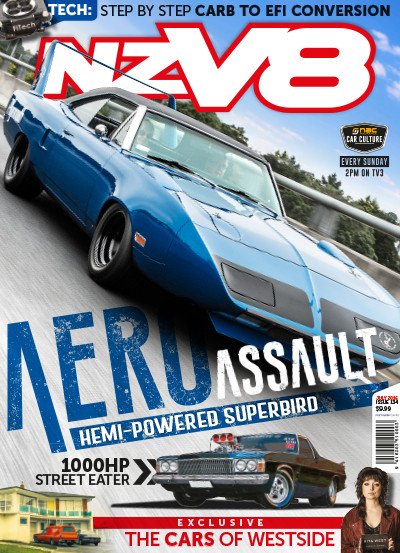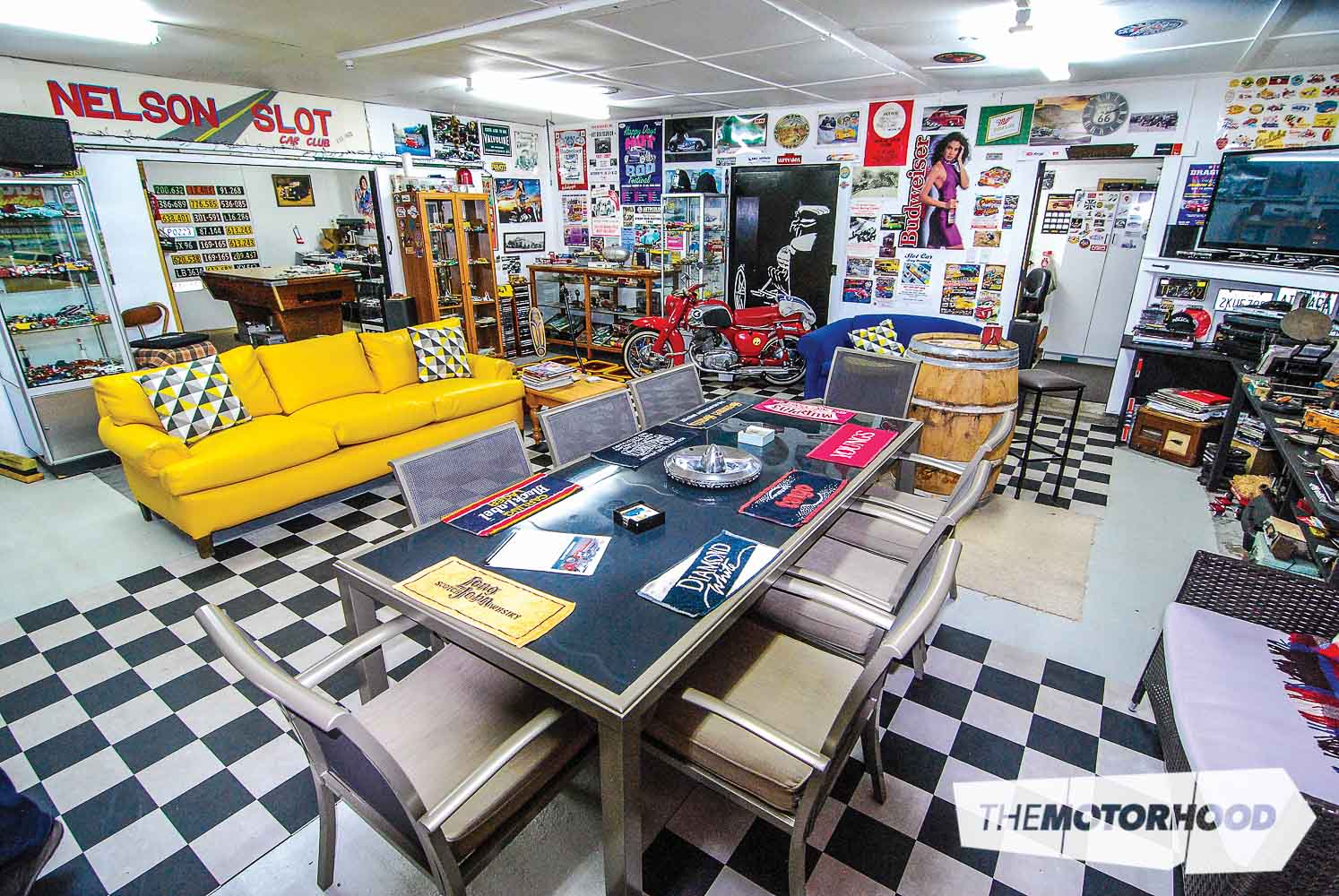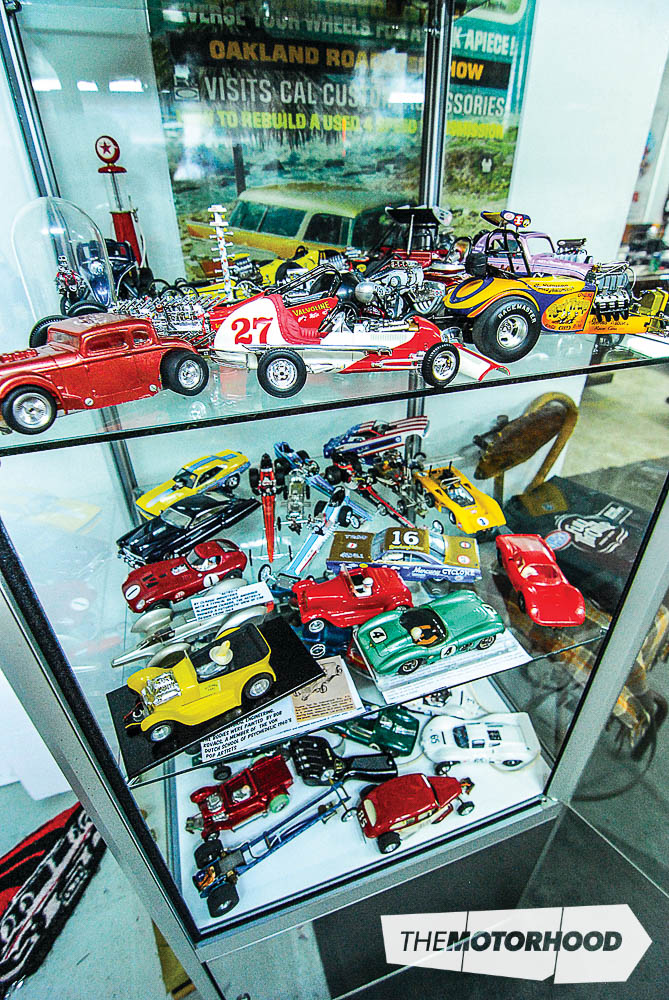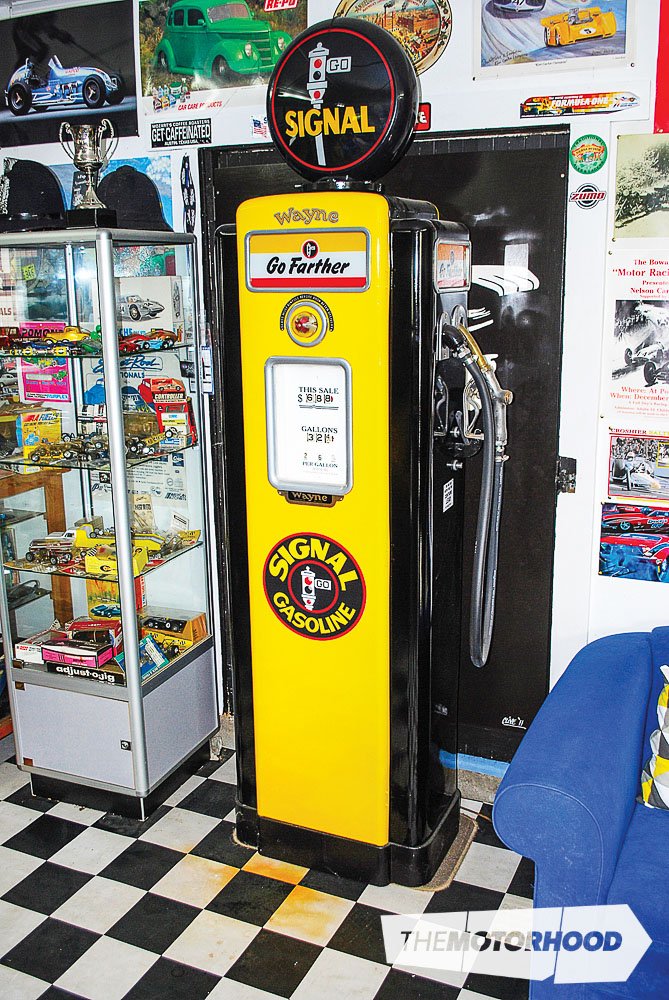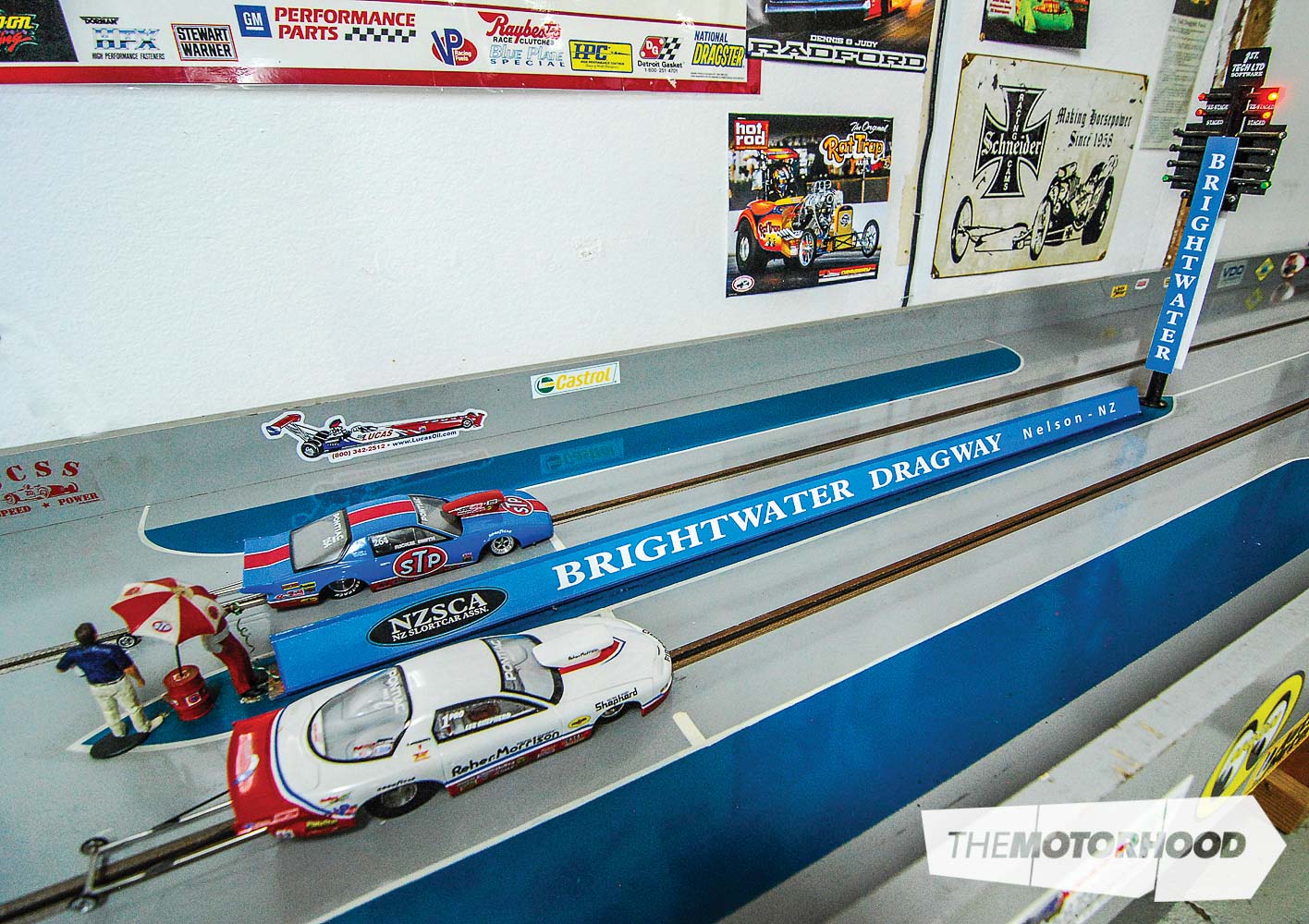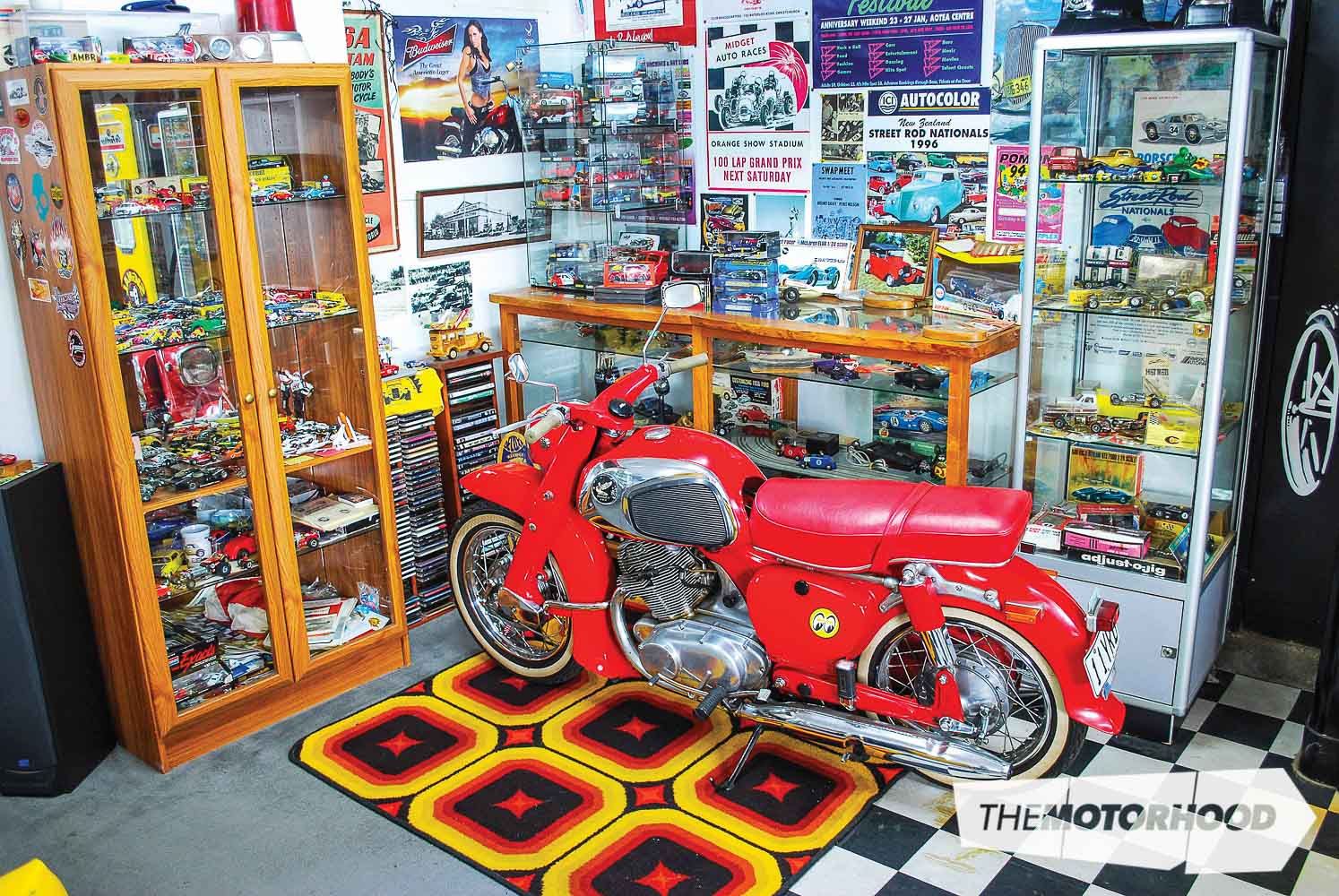data-animation-override>
“Tony Cook has been into slot cars for just about his entire life, and that sure shows in his man cave — a shrine dedicated to the noble pursuit of slot-car racing”
I started slot-car racing when I was 15. I would bike down to the local raceway and hire a car. Then my parents bought me a Cox Cheetah slot car — the best that money could buy. I’ve been fascinated ever since,” Nelson’s Tony Cook says, explaining how that one gift transformed, over the years, into the shrine to slot-car racing you see before you.
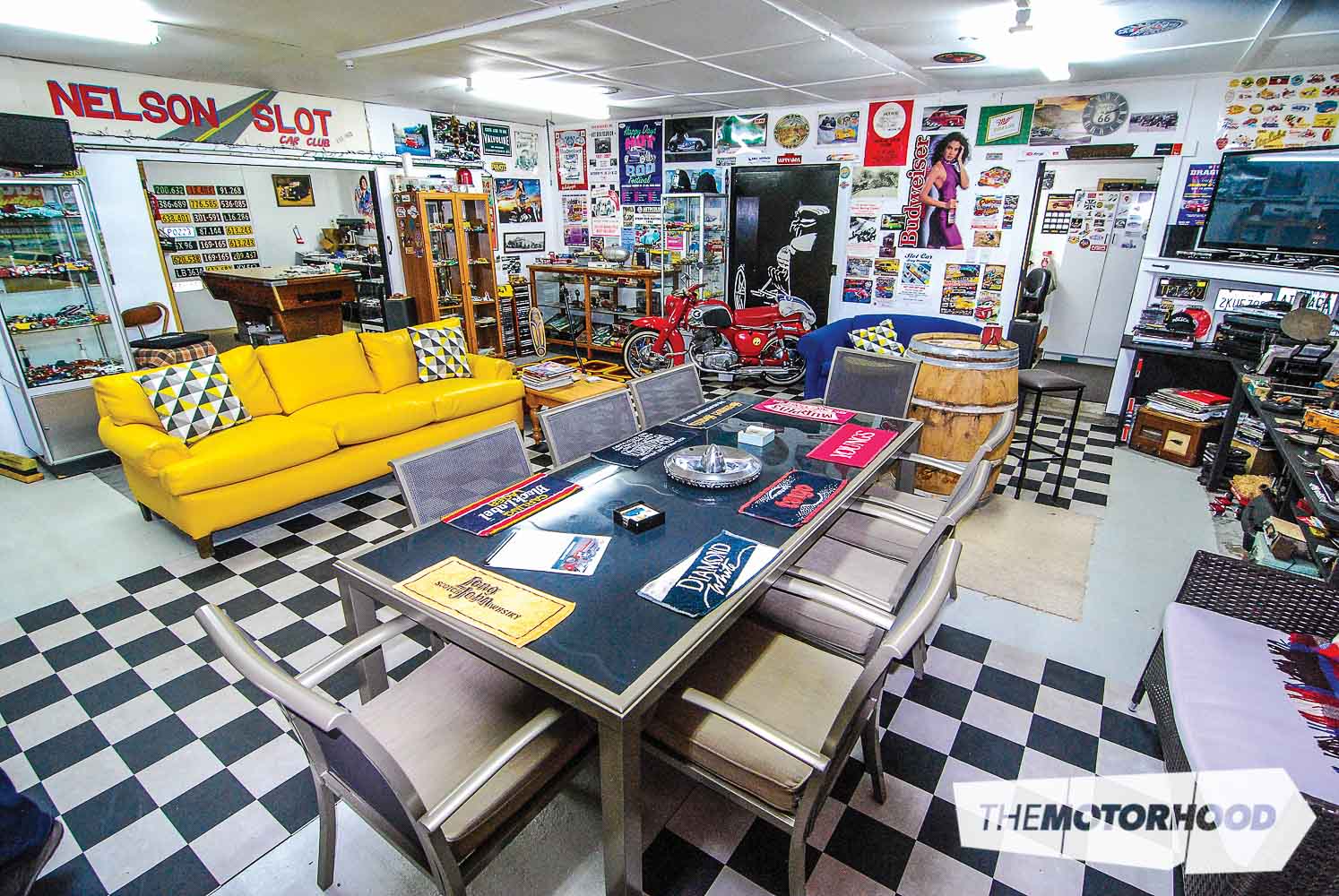
In fact, to call it a shrine may be to do it a disservice — it’s more akin to a temple. With the good grace of his wife, Sue, Tony has amassed hundreds of slot cars from throughout the ages, in all manner of styles. This is so much more than an adult kid’s dream garage; Tony’s collection is one of a lifelong petrolhead who has ‘been there, done that’ but never deviated from his very clear passion. While Tony took a break from the hobby between the 1970s and 1980s to focus on all the important life things, slot-car racing has always been his go-to.
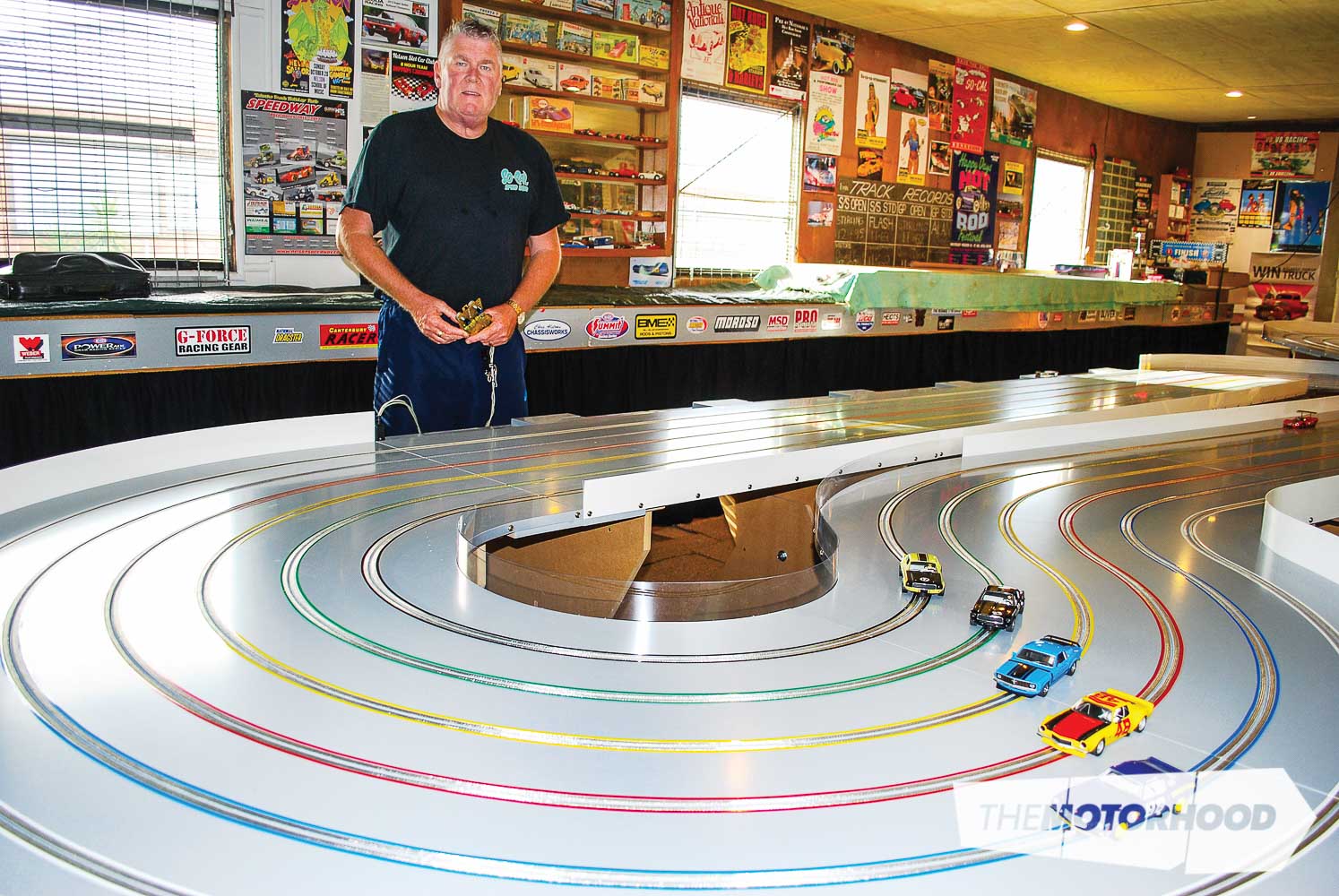
If you needed any more proof of the man’s dedication to the art of slot-car racing, look no further than his enormous, purpose-built, six-lane racetrack — a brand-new addition to the set-up, replacing the 47-year-old routed wooden track that, until very recently, served as the cornerstone of the Nelson Hotslots Slot Car Club, which Tony hosts from this very building.
The club has been around since 1963 and has changed guise several times, but Tony’s never been far away. He tried running it as a commercial venture, but concedes that it’s best run privately, as it is currently. Club meetings are held weekly, with members participating in both circuit and drag racing sessions, held on alternate weeks — yep, in addition to the huge race circuit, there’s also a 55-foot drag strip.
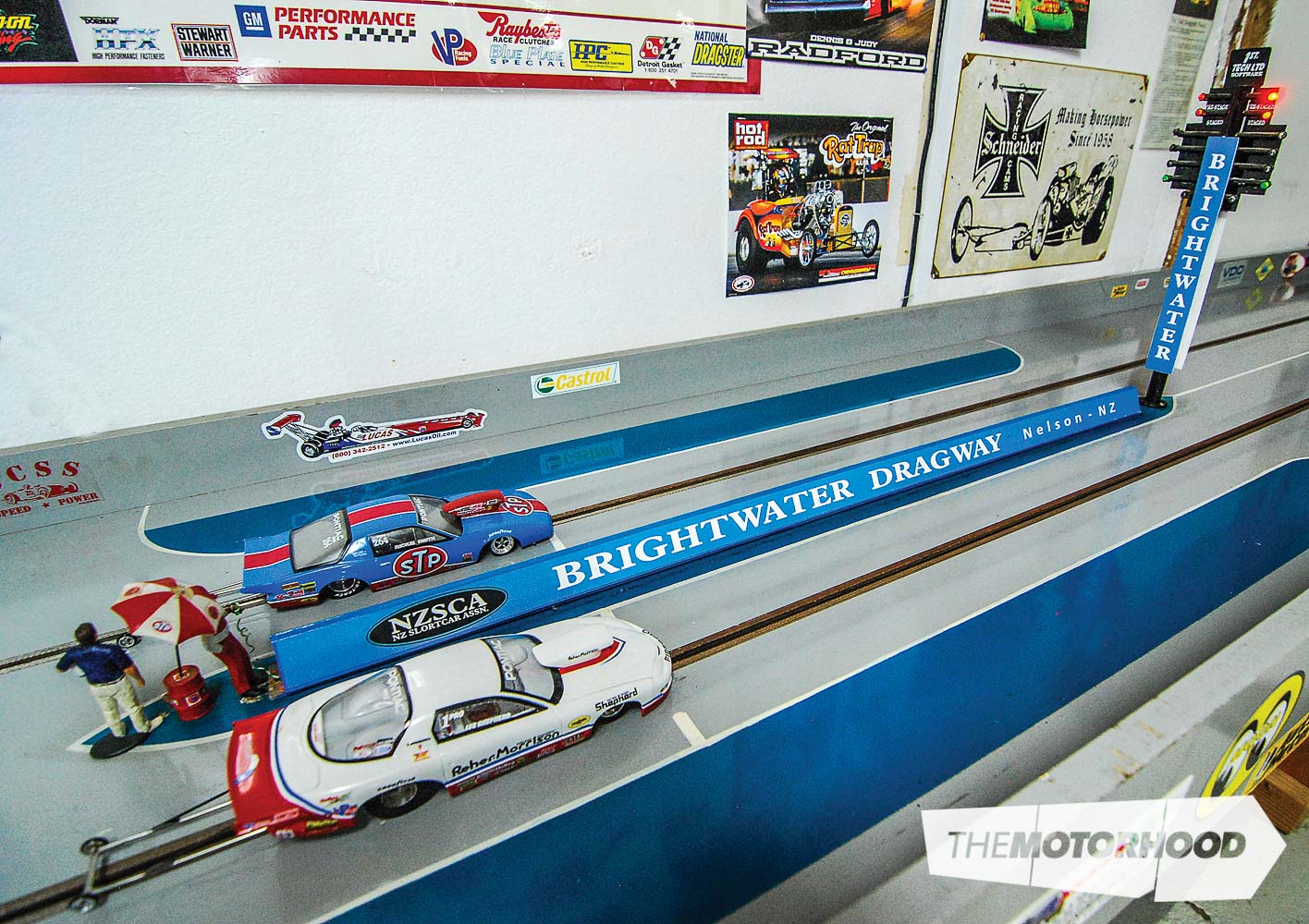
Racing is broken up into seven classes, with both dial-your-own (DYO) and heads-up racing formats, and, just like full-size drag racing, these slot-car classes enforce limits on factors such as vehicle weight and body style. The Christmas tree functions exactly as a real-life one does and can be programmed to suit different race formats, with a timing board displaying all relevant race information. Adding to the realism factor, Tony mentions that many of the drag vehicles are based on legitimate drag cars, including two versions of the iconic ‘Baloo’, Craig Stare’s ‘Street Fighter’, the Amco altered, and many, many others. It’s worth noting that none of these cars was purchased off the shelf — they’ve been painstakingly modified and painted to look the part.
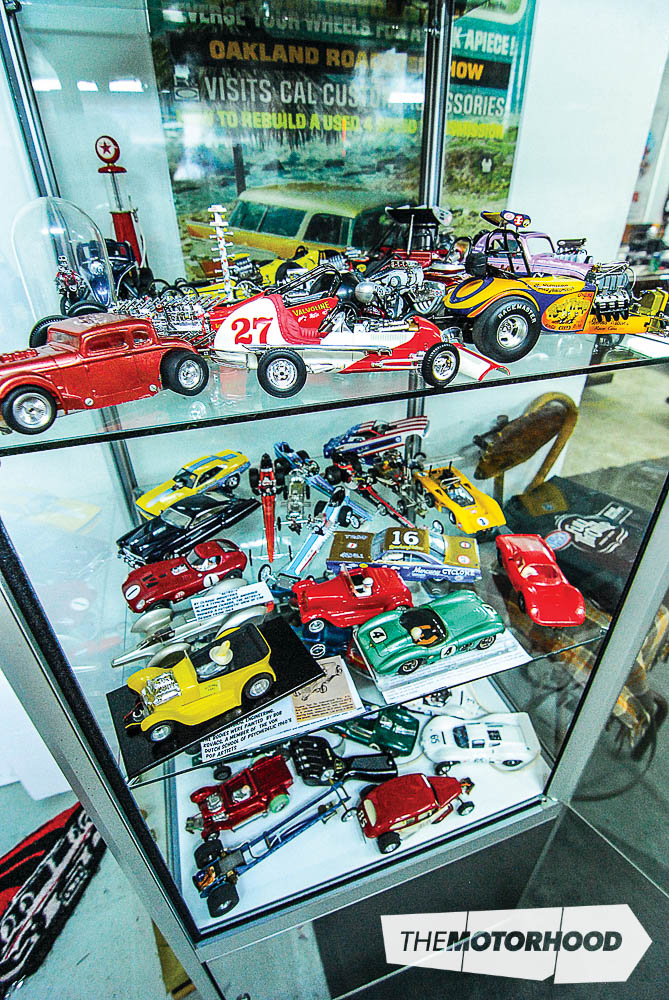
The circuit racing is also broken up into seven classes, including Classic Saloons, Classic V8s, Classic Sports Cars, GT3, Vintage, etc. Each class has specific rules and regulations, and racers compete for the win at each meeting, with a trophy at the end of the season. It truly is an art form, closely mirroring the full-size equivalent. To be properly competitive, racers need to be proficient at trueing tyres, adjusting suspension settings, and all nature of tweaks, to shave precious fractions of seconds off their laps. The sport is incredibly organized — far more so than one unfamiliar with slot-car racing might expect — but, considering the club’s half-century in existence, that’s hardly a surprise.
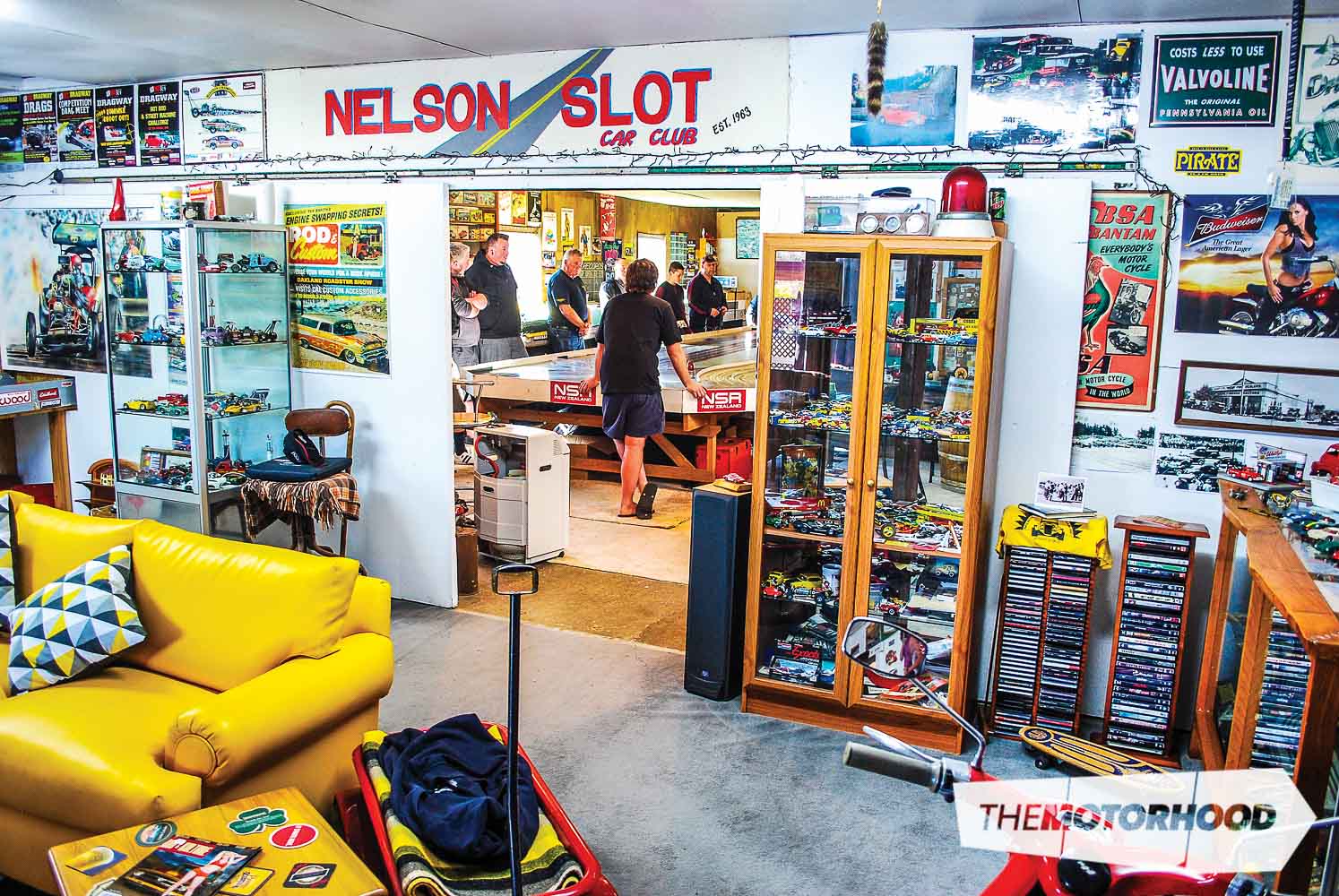
The same could go for the non-slot-car bits and bobs throughout the area. Forty-five years of hot rodding has seen Tony wind up with a thorough collection, sourced from here and abroad, covering just about every spare bit of wall space in just about every room — old hot rod posters, merchandise, US licence plates, hubcaps, signboards, you name it.
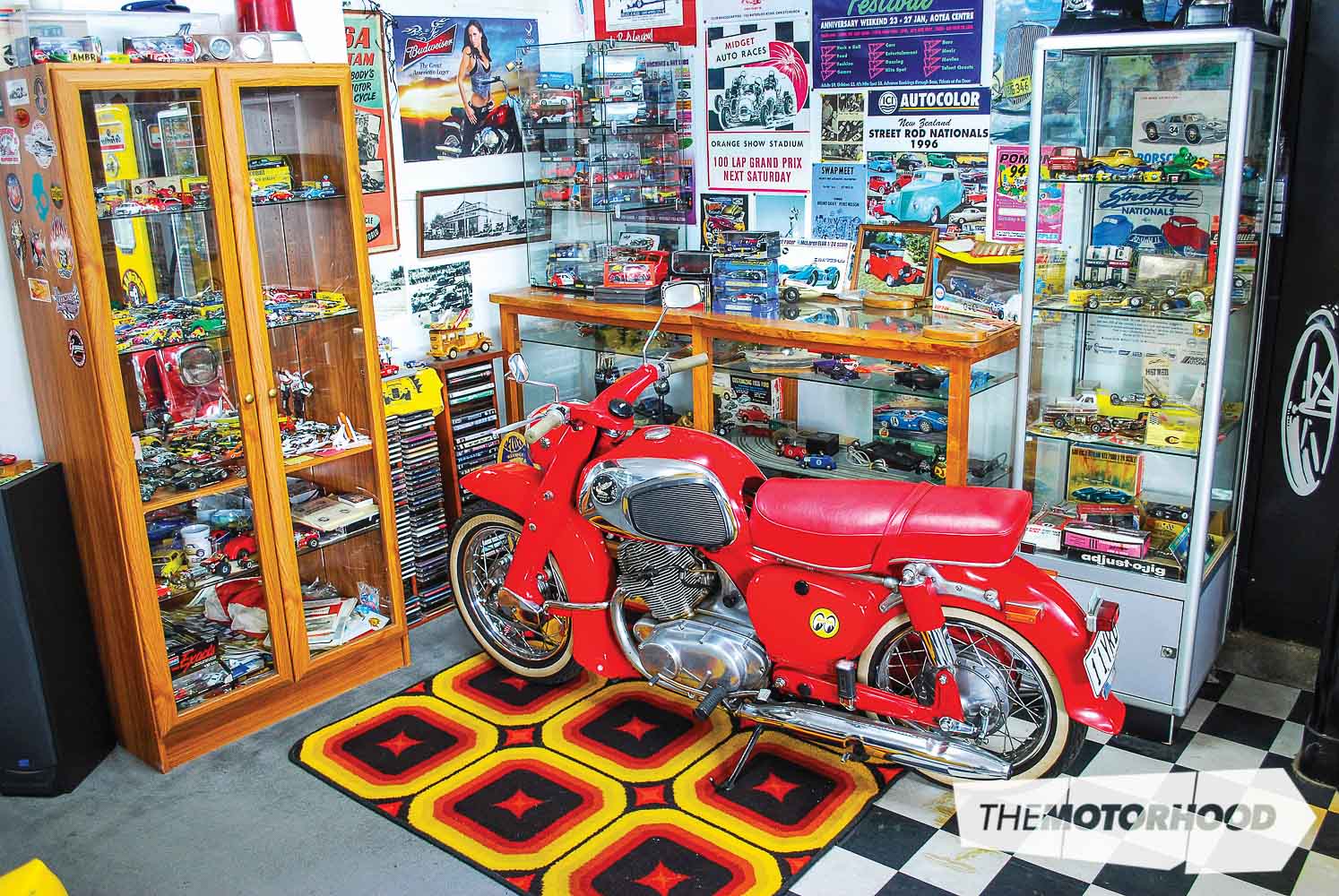
Tony’s also got a 1962 Honda Dream 305 motorcycle sitting pretty in amongst it all — received a while ago as part of a vehicle trade. While it’s not exactly to his taste, he appreciates its style and the way it complements its environment perfectly.
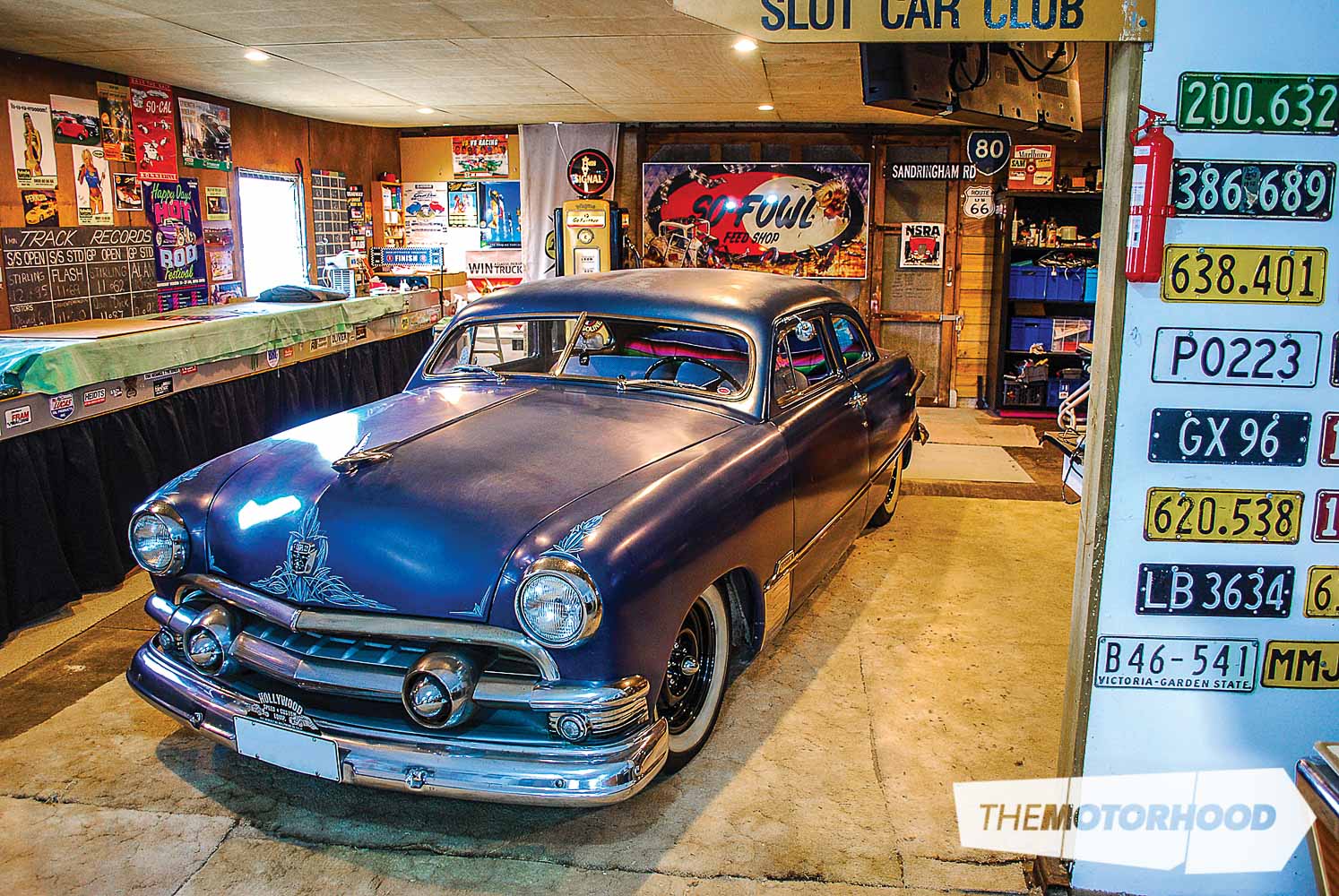
Tony’s years and years of automotive passion are why the garage houses some other cool machinery in 1:1 scale — most notably his kustom-style ’51 Ford twin-spinner. Starting life as an original California-sourced Tudor, with a genuine 53,000 miles on the clock, you’ll note that it’s far from original nowadays. Prior to Tony gaining ownership, the cruiser was owned by the Kennedy brothers of Pomona, California and was subject to custom work by Cole Foster of the Salinas Boys. This included the roof chop, shortening of the roof, and canting the B-pillar, for that essential ’50s kustom look.
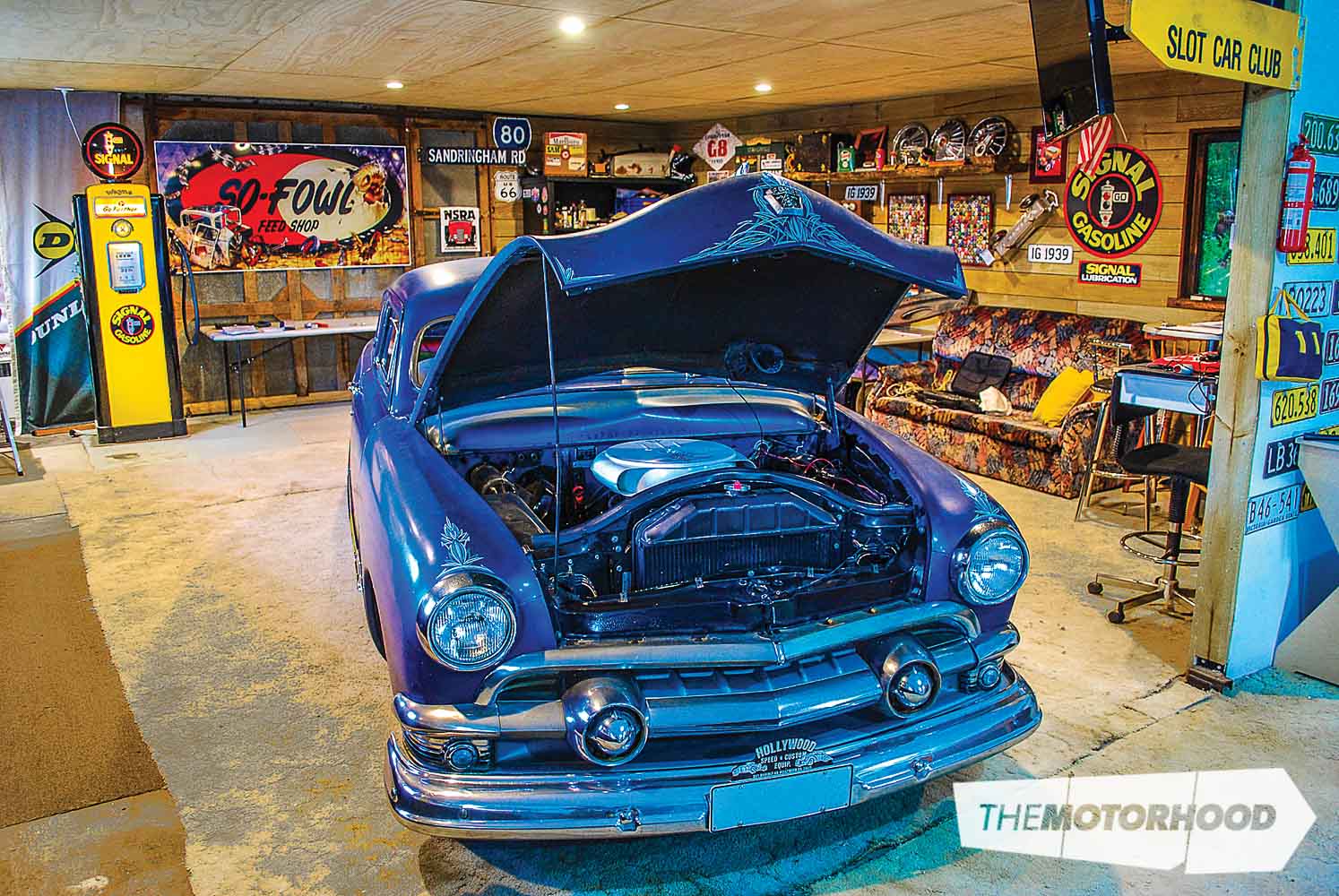
The Tudor sits at a height both functional and aesthetically correct, thanks to front drop spindles, and runs a 327ci small block with TH700R4 transmission — just the ticket for legit drivability, whenever and wherever. Even more impressive is the fact that the car’s paintwork came in as-is condition, save for touch-ups from the roof chop, and the addition of some intricate pinstriping by the late Steve Foster, who was also the car’s original importer into New Zealand. Good thing, too — Tony mentions that Sue loves driving the Ford, and he can’t keep her from behind the wheel!
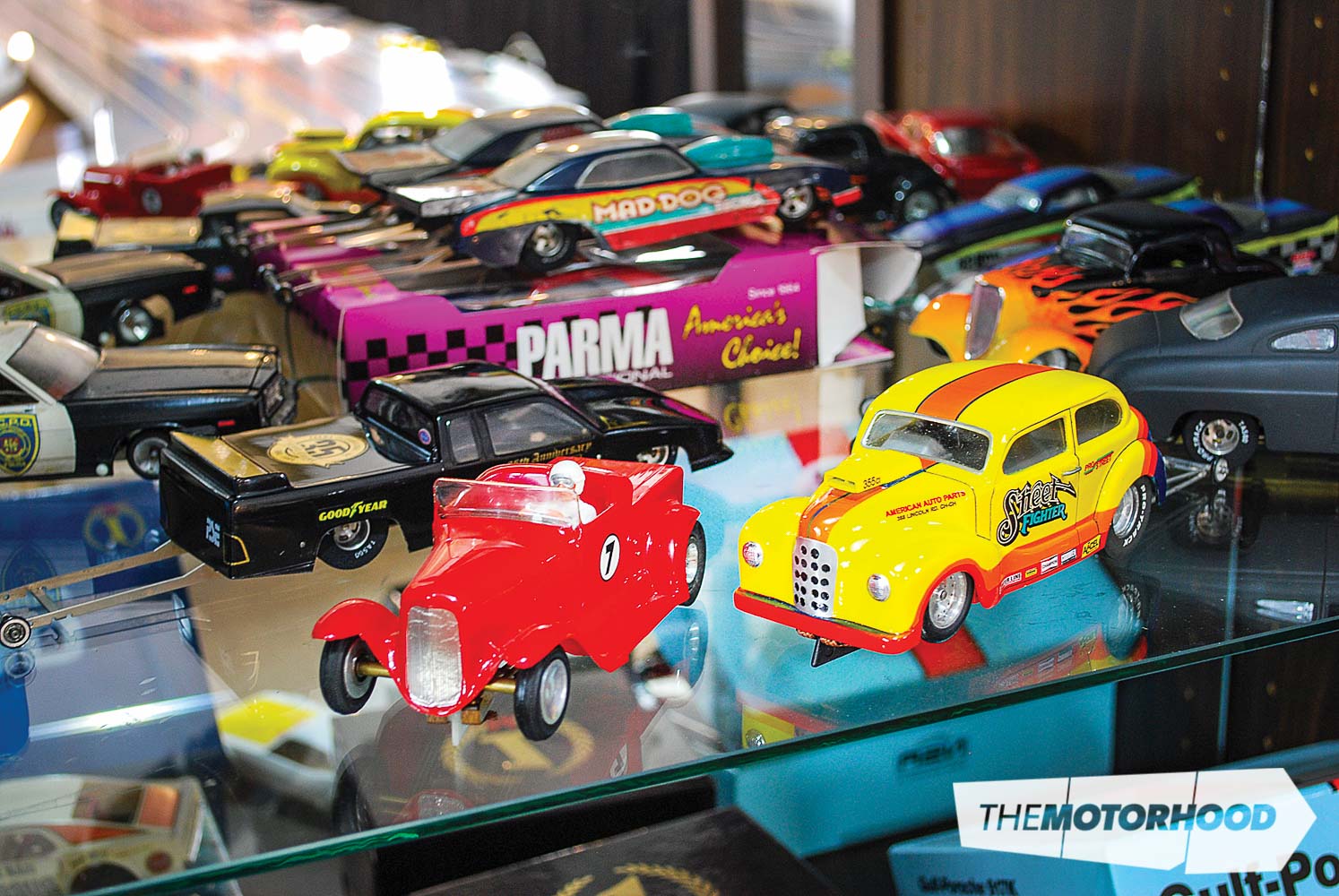
In addition to the kustom, Tony’s got another seriously cool set of old-school wheels — a ’30 Model A coupe, which was away at the panel beaters at the time these photos were taken. The Model A was built and driven in the States but is currently undergoing a full panel and paint before being put on the road here. Tony hopes to have it all legal next year.
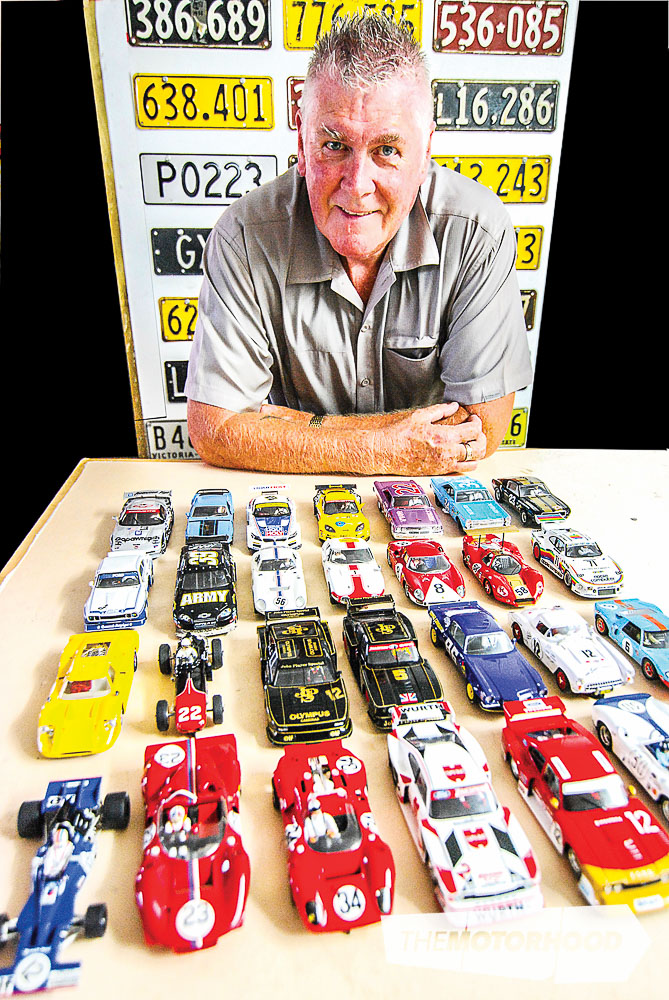
The best of both worlds — Tony can enjoy his full-size toys and his miniatures.
“A lot of guys out there would love to get into slot-car racing, but don’t want to be thought of as children,” he says — and they’re missing out. The way Tony sees it, it’s a passion and a creative outlet, and he’s clearly not alone in that thinking. Very shortly, Tony will be hosting a large slot-car race meeting — the new track’s maiden race event — to which he is expecting 60-odd attendees. Even the weekly meetings at the Nelson slot-car club attract 20 to 25 racers — it seems that the future of the sport of slot-car racing is in very good hands.
Images: Bob Reed
This article was originally published in the July 2016 issue of NZV8 (Issue No. 134). You can pick up a print copy or a digital copy of the magazine below:
